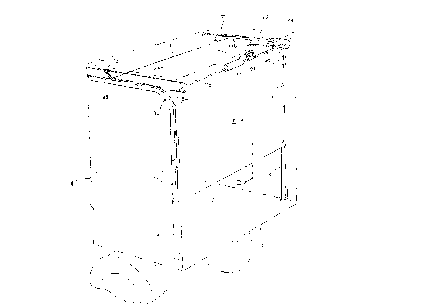Some of the information on this Web page has been provided by external sources. The Government of Canada is not responsible for the accuracy, reliability or currency of the information supplied by external sources. Users wishing to rely upon this information should consult directly with the source of the information. Content provided by external sources is not subject to official languages, privacy and accessibility requirements.
Any discrepancies in the text and image of the Claims and Abstract are due to differing posting times. Text of the Claims and Abstract are posted:
| (12) Patent Application: | (11) CA 2185080 |
|---|---|
| (54) English Title: | ROLL UP DOOR |
| (54) French Title: | PORTE A ENROULEMENT VERTICAL |
| Status: | Deemed Abandoned and Beyond the Period of Reinstatement - Pending Response to Notice of Disregarded Communication |
| (51) International Patent Classification (IPC): |
|
|---|---|
| (72) Inventors : |
|
| (73) Owners : |
|
| (71) Applicants : |
|
| (74) Agent: | SMART & BIGGAR LP |
| (74) Associate agent: | |
| (45) Issued: | |
| (22) Filed Date: | 1996-09-09 |
| (41) Open to Public Inspection: | 1998-03-10 |
| Availability of licence: | N/A |
| Dedicated to the Public: | N/A |
| (25) Language of filing: | English |
| Patent Cooperation Treaty (PCT): | No |
|---|
| (30) Application Priority Data: | None |
|---|
A roll up door which may be used in the back of a van
body comprises a plurality of panels arranged edge-to-edge with
a thin flexible sheet glued to the outside face of the panels
and a flexible belt attached to each pair of adjacent panels at
the rear face of these panels. A roller extends from each end
of each panel and is received by a generally inverted L-shaped
guide track. With this arrangement, the panels may cant while
moving from the vertical to the horizontal leg of the guide
channels by virtue of the belts which hinge and collapse
allowing the outer sheet to bend as well.
Cette invention concerne une porte à enroulement vertical destinée à fermer l'arrière d'une caisse de camion, ladite porte étant composée d'une pluralité de lattes jointives sur la face extérieure desquelles est collée une feuille souple mince. De l'autre côté, chaque paire de lattes adjacentes est reliée par un ruban souple. Chacune des lattes porte un galet à ses deux extrémités qui circule dans un chemin de roulement ayant la forme générale d'un L inversé. Grâce à cette disposition, les lattes peuvent s'incliner lorsque les galets correspondants passent de la partie verticale à la partie horizontale du chemin de roulement, les courroies se plissant à la manière d'un soufflet et permettant à la feuille de revêtement extérieur de plier également.
Note: Claims are shown in the official language in which they were submitted.
Note: Descriptions are shown in the official language in which they were submitted.

2024-08-01:As part of the Next Generation Patents (NGP) transition, the Canadian Patents Database (CPD) now contains a more detailed Event History, which replicates the Event Log of our new back-office solution.
Please note that "Inactive:" events refers to events no longer in use in our new back-office solution.
For a clearer understanding of the status of the application/patent presented on this page, the site Disclaimer , as well as the definitions for Patent , Event History , Maintenance Fee and Payment History should be consulted.
| Description | Date |
|---|---|
| Inactive: IPC deactivated | 2015-01-24 |
| Inactive: IPC expired | 2015-01-01 |
| Inactive: IPC assigned | 2015-01-01 |
| Inactive: IPC from MCD | 2006-03-12 |
| Inactive: IPC from MCD | 2006-03-12 |
| Inactive: IPC from MCD | 2006-03-12 |
| Time Limit for Reversal Expired | 2000-09-11 |
| Application Not Reinstated by Deadline | 2000-09-11 |
| Inactive: Cover page published | 1999-09-30 |
| Deemed Abandoned - Failure to Respond to Maintenance Fee Notice | 1999-09-09 |
| Application Published (Open to Public Inspection) | 1998-03-10 |
| Abandonment Date | Reason | Reinstatement Date |
|---|---|---|
| 1999-09-09 |
The last payment was received on 1998-09-08
Note : If the full payment has not been received on or before the date indicated, a further fee may be required which may be one of the following
Please refer to the CIPO Patent Fees web page to see all current fee amounts.
| Fee Type | Anniversary Year | Due Date | Paid Date |
|---|---|---|---|
| MF (application, 2nd anniv.) - standard | 02 | 1998-09-09 | 1998-09-08 |
Note: Records showing the ownership history in alphabetical order.
| Current Owners on Record |
|---|
| DIESEL EQUIPMENT LIMITED |
| Past Owners on Record |
|---|
| JOHN C. MARTIN |